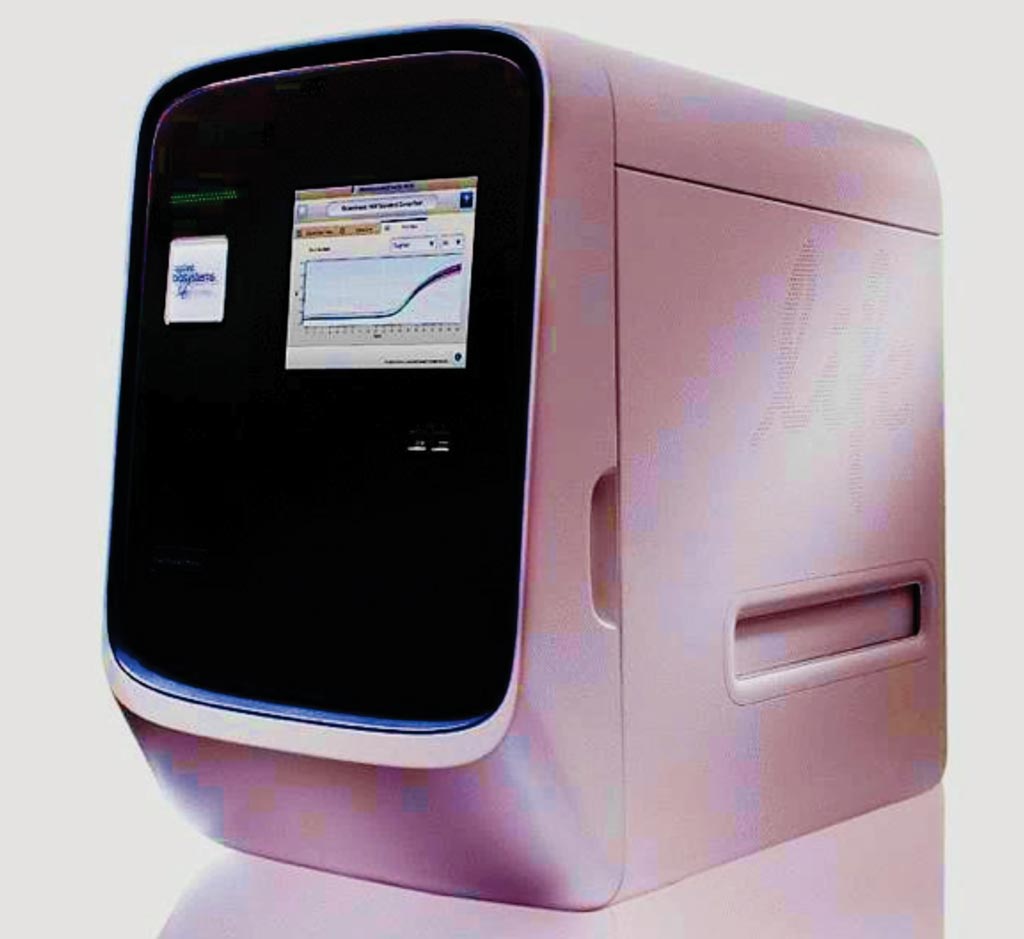Two Simple Tests Help Pinpoint Cause of Stroke
By LabMedica International staff writers
Posted on 24 Jan 2018
About 85% of spontaneous intracerebral hemorrhages have no underlying macrovascular cause and are attributed to small vessel disease, mostly arteriolosclerosis with or without cerebral amyloid angiopathy (CAA).Posted on 24 Jan 2018
Detecting the cause of the deadliest form of stroke could be improved by a simple blood test added alongside a routine brain scan. This new approach could revolutionize the way doctors manage strokes caused by bleeding in the brain, known as intracerebral hemorrhage (ICH).

Image: The QuantStudio 12K Flex real-time polymerase chain reaction (PCR) system instrument (Photo courtesy of Thermo Fisher Scientific).
Physicians at the University of Edinburgh (Edinburgh, UK) and their colleagues prospectively identified all incident cases of ICH with multiple overlapping sources of case ascertainment. They included consecutive adult patients (aged ≥16 years) with first-ever ICH by computerized tomography (CT). The team aimed to develop a multivariable prediction model for identifying lobar ICH associated with CAA using CT and genetic features, internally validate the model, and assess the diagnostic accuracy of different cutoffs to rule in and rule out CAA-associated intracerebral hemorrhage.
The doctors obtained DNA from peripheral blood samples or cerebellar tissue stored in the LINCHPIN brain bank with standard methods. They classified Apolipoprotein E (APOE) genotype as APOE ɛ2 possession if participants had at least one ɛ2 allele or APOE ɛ4 possession if they had at least one ɛ4 allele. Genotypes for two APOE single-nucleotide polymorphisms (rs429358 and rs7412) were determined using TaqMan single-nucleotide polymorphism genotyping assays on a QuantStudio 12K Flex Real Time polymerase chain reaction (PCR) system instrument.
The team found that among 110 adults (median age 83 years, 49 [45%] men) included in the study between June 1, 2010 and Feb 10, 2016, intracerebral hemorrhage was lobar in 62 (56%) participants, deep in 41 (37%), and infratentorial in seven (6%). Of the 62 participants with lobar intracerebral hemorrhage, 36 (58%) were associated with moderate or severe CAA compared with 26 (42%) that were associated with absent or mild CAA, and were independently associated with subarachnoid hemorrhage, 32/36 (89%) versus11/26 (2%), intracerebral hemorrhage with finger-like projections and APOE ɛ4 possession, 18/36 (50%) versus 2/26 (8%).
Mark A Rodrigues, MB ChB, FRCR, the lead author of the study said, “Identifying the cause of a brain hemorrhage is important to planning patient care. Our findings suggest that the combination of routine CT scanning with APOE gene testing can identify those whose ICH has been caused by CAA, a group who may be more at risk of another ICH or dementia.” The study was published on January 10, 2018, in the journal Lancet Neurology.
Related Links:
University of Edinburgh














